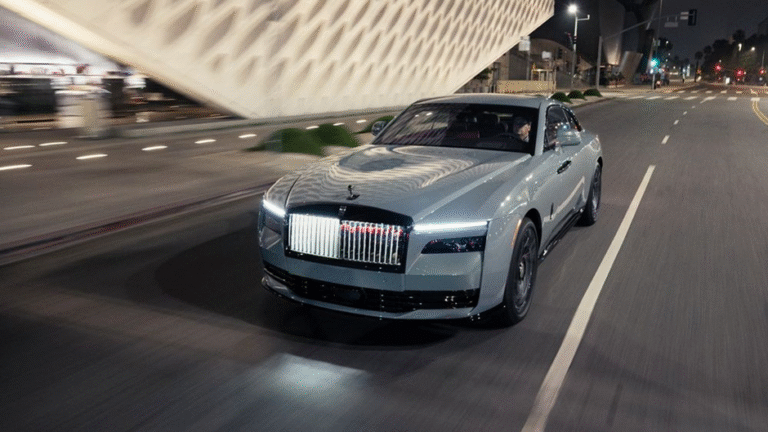The 2026 Toyota bZ marks a bold stride forward, boasting upgrades that span from its revamped name to a cutting-edge charging system. The 2022 bZ4X was a surprising misstep from Toyota, a company known for precision and reliability. Overpriced and lacking key features, it struggled with outdated tech and a name that left many scratching their heads.

This time, Toyota took feedback seriously and unleashed its renowned culture of continuous improvement on the new model. The vehicle’s name has been simplified to just bZ. It might not roll off the tongue like a poem, but it certainly looks sharper—no longer resembling a glitchy printer’s error. The 2026 bZ now stands shoulder to shoulder with popular small electric SUVs like the Kia Niro, Hyundai Kona, and Fiat 500e.
Set to hit the market in the latter half of 2025, detailed pricing, range, and charging specs are expected soon. I recently had the chance to test drive a fully loaded bZ Limited around the outskirts of Toyota’s North America hub in Plano, Texas. The transformation from the bZ4X Limited I drove months ago was striking—it felt like a completely new beast.
Major Upgrades of the 2026 Toyota bZ
- 25% boost in driving range, now up to 314 miles
- 50% surge in horsepower, reaching 338 hp
- New NACS charging port for Tesla compatibility
- Plug & Charge functionality for effortless charging
A Complete Overhaul
The heart of the 2026 bZ lies in its battery, charging capabilities, and motors—all drastically improved. Buyers can choose between two lithium-ion battery sizes: a 74.7 kWh pack delivering up to 314 miles, or a smaller 57.7 kWh battery rated for 236 miles. The battery now supports pre-conditioning, allowing faster charging and better energy efficiency in cold weather.
A built-in NACS charging port unlocks access to Tesla’s expansive DC fast charging network, though owners will still need an adapter to use the more common CCS chargers. Charging at home or other 240v stations is quicker thanks to an onboard charger upgrade from 7 kW to 11 kW. Plus, Plug & Charge technology simplifies the process at compatible stations like Electrify America, EVgo, ChargePoint, and Tesla’s own network.
Performance also gets a big lift: the all-wheel-drive model’s power jumps from 214 to 338 horsepower, while the front-wheel-drive version climbs from 201 to 221 hp.

Visually, the 2026 bZ sports refreshed LED running lights and a redesigned front fascia that aligns with Toyota’s “hammerhead” design language. The body-colored front fascia and wheel cladding add a more polished, cohesive look.
Driving Experience
Acceleration is noticeably sharper, with Toyota claiming a 0-60 mph sprint in just 4.9 seconds for the AWD variant—a figure they curiously left out for the original model. Steering feels responsive and composed, whether navigating quiet neighborhoods, bustling shopping areas, or smooth, curving roads weaving through corporate campuses and parks.
Brakes offer firm, predictable feedback, and new steering wheel paddles let drivers adjust regenerative braking levels to recapture energy, although there’s no full one-pedal driving mode to bring the car to a stop.
Inside, the front seats offer plenty of space, complemented by a large center console that houses two wireless charging pads. Wireless Apple CarPlay and Android Auto come standard, keeping drivers connected seamlessly.
The dashboard features a 14-inch touchscreen with an upgraded, larger, and easier-to-read instrument cluster. Climate control has also seen smart enhancements: a heat pump optimizes energy use for heating and cooling, while heated front seats and steering wheel come standard. Optional extras include ventilated front seats, heated rear seats, and radiant foot and leg heaters for the front occupants.
Why Consider the 2026 Toyota bZ?
While final pricing and charging times remain under wraps, the 2026 bZ delivers many reasons to get excited. Its bigger battery and stronger powertrain make it competitive within the small electric SUV segment. The updated styling transforms it from a clunky prototype into a grown-up, refined contender.
The cabin on the bZ Limited is comfortable and upscale, boasting soft materials and generous room. All in all, this model represents a giant leap forward for Toyota’s electric vehicle lineup, deserving a close look from anyone shopping for a compact EV.
Quick Specs Snapshot: 2026 Toyota bZ
- Compact electric SUV, front- or all-wheel drive
- Seating for five
- Base price: To be announced
- Release: Second half of 2025
- Model tested: bZ AWD Limited
- Powertrain: Dual electric motors (167 kW front, 87 kW rear)
- Horsepower: 338 hp total
- 0-60 mph: 4.9 seconds (AWD), approx. 8 seconds (FWD)
- Battery options: 74.7 kWh (up to 314 miles range), 57.7 kWh (236 miles)
- Max charging speed: 150 kW DC fast charge, 11 kW AC
- Dimensions: 184.6 in length, 73.2 in width, 65 in height, 112.2 in wheelbase
- Ground clearance: 8.2 inches
- Passenger volume: 94.4 cubic feet
- Cargo space: 27.7 cubic feet behind rear seats (slightly less with JBL speakers)
- Curb weight: 4,453 pounds
- Manufactured in Aichi, Japan
The 2026 Toyota bZ clearly signals Toyota’s renewed commitment to crafting competitive, appealing electric vehicles. With improved power, range, and tech, it’s poised to challenge rivals and win over EV enthusiasts eager for a practical, stylish ride.



